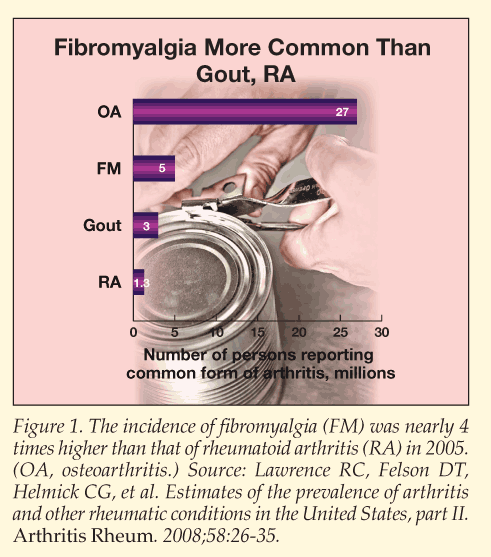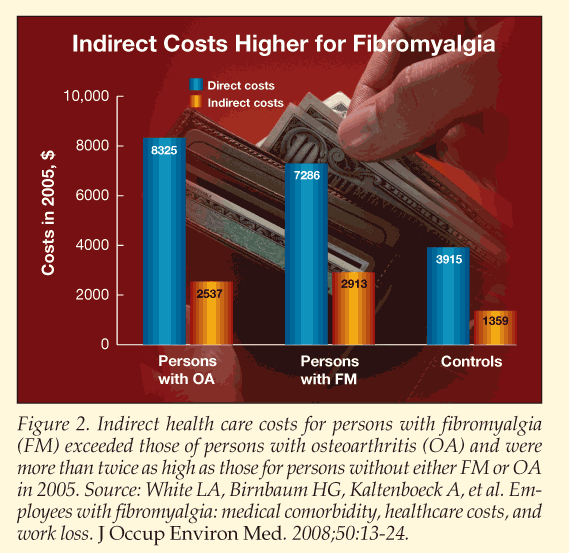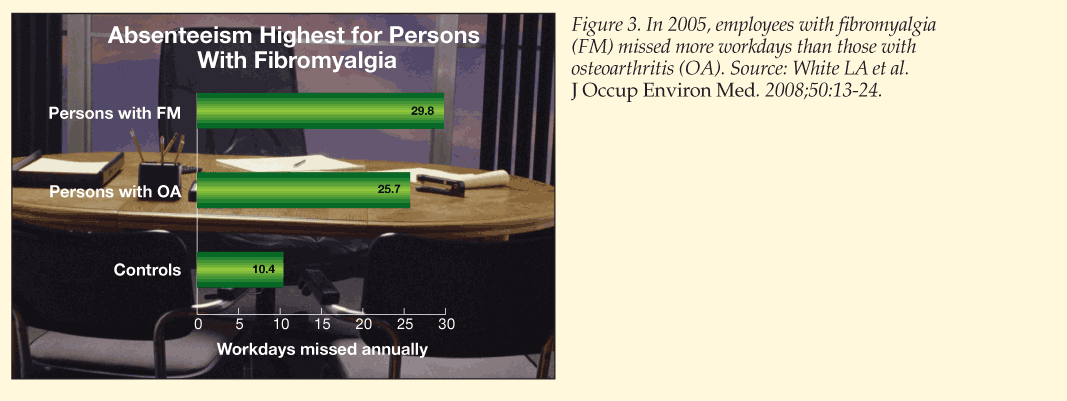- Clinical Technology
- Adult Immunization
- Hepatology
- Pediatric Immunization
- Screening
- Psychiatry
- Allergy
- Women's Health
- Cardiology
- Pediatrics
- Dermatology
- Endocrinology
- Pain Management
- Gastroenterology
- Infectious Disease
- Obesity Medicine
- Rheumatology
- Nephrology
- Neurology
- Pulmonology
Employers, Women Feel Pain of Fibromyalgia
An estimated 5 million US adults, or about 2% of the adult population, have fibromyalgia (FM), according to 2005 data collected by the National Arthritis Data Workgroup (Figure 1). FM is a chronic condition of unknown etiology characterized by widespread muscle pain, sleep disturbance, fatigue, and often psychological distress and is considered a form of arthritis. The workgroup also reported that the only study on the prevalence of primary FM in the United States-which included 3006 adults 18 years and older-showed that prevalence was significantly higher among women than among men (3.4% vs 0.5%; approximately a 7:1 ratio). In women, prevalence of the condition rose sharply in middle age, to 7.4% among those aged 70 to 79 years, and then declined. Prevalence of FM in men similarly peaked between 70 and 79 years but was only slightly more than 1% among men in this age-group. The CDC notes that the condition can also develop in children.

An estimated 5 million US adults, or about 2% of the adult population, have fibromyalgia (FM), according to 2005 data collected by the National Arthritis Data Workgroup (Figure 1). FM is a chronic condition of unknown etiology characterized by widespread muscle pain, sleep disturbance, fatigue, and often psychological distress and is considered a form of arthritis. The workgroup also reported that the only study on the prevalence of primary FM in the United States-which included 3006 adults 18 years and older-showed that prevalence was significantly higher among women than among men (3.4% vs 0.5%; approximately a 7:1 ratio). In women, prevalence of the condition rose sharply in middle age, to 7.4% among those aged 70 to 79 years, and then declined. Prevalence of FM in men similarly peaked between 70 and 79 years but was only slightly more than 1% among men in this age-group. The CDC notes that the condition can also develop in children.

The National Fibromyalgia Association estimates total annual costs attributed to FM at $12 billion to $14 billion. Researchers at the Analysis Group, Boston, led by Leigh Anne White, PhD, reported that in 2005, total health care costs for employees with FM ($10,199) approached those for employees with osteoarthritis (OA) ($10,862) (Figure 2). Total direct costs for employees with FM ($7286) were 12% lower than those for employees with OA ($8325) and 86% higher than those for controls ($3915). Total indirect costs for employees with FM were $2913 compared with $2537 for employees with OA and $1359 for controls. Prescription drug costs for employees with FM ($1630) were slightly higher than those for employees with OA ($1341) and were more than twice as high as those for controls ($755).

FM imposes a substantial economic burden on employers in terms of absenteeism. Employees with FM missed an average of 29.8 workdays in 2005. This amount of lost work time exceeded that of employees with OA (25.7 days) and was about 3 times higher than that of controls (10.4 days) (Figure 3).
